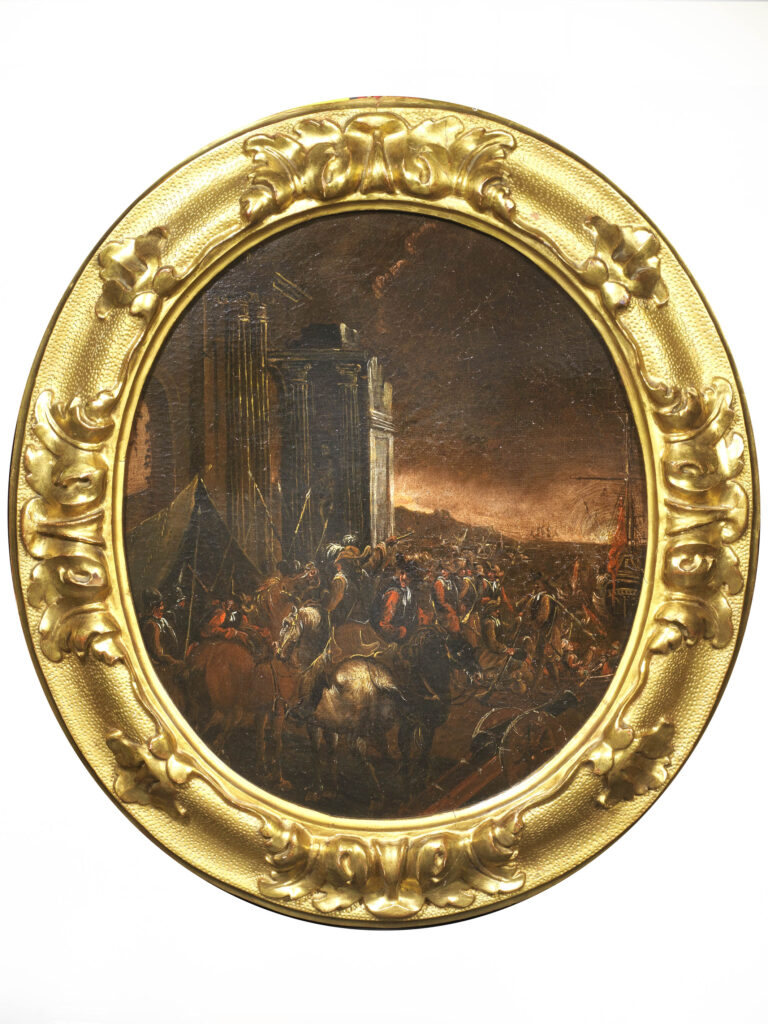ANONYMOUS LATE 18TH CENTURY ARTIST
Pair of Battle scenes
oil on canvas, cm 42×37,5
The centuries that saw the spread of battle scenes as a genre in its own right were undoubtedly the 17th and 18th centuries. The growing interest in paintings of battles, with their countless variants, reflected the evolving political scene, innovations in the field of artillery and the new strategies that all this entailed.
The small battle scenes presented here, conceived as a pendant pair, are a perfect example of these new tastes, breaking away from the requirements of a specific clientele and instead targeted at wider scale production, into which this anonymous painter fits perfectly. Set in a bay with glimpses of ancient ruins in the background, the two scenes could allude to different moments in the same clash, as seems to be indicated by the details.
In the first oval, the figure on horseback wearing the plumed hat extends his arm in the act of pointing to the spot at sea where the battle is already raging, clearly represented by the flashes of cannon fire rendered with thin concentric semi-circular brushstrokes. On the right a small boat carries some soldiers to the nearby vessel, probably heading out towards the fighting itself. Another particularly interesting detail is the seated soldier, intent on loading his rifle as if preparing for action.
In the second oval, the intrados and left side of the arch are strongly illuminated by flashes from the background, suggesting a battle in progress. On the right, leaning on a cannon wheel and dressed in a red uniform with gold details, the commander issues an order with his baton, which appears to point towards the man on horseback, facing the sea, intent in fact on giving a bugle signal. On the left, a soldier bends over a lifeless, half-naked body washed ashore, possibly that of one of the soldiers who died during the naval battle.
An interesting detail can be observed in the helmets that evoke a style from north of the Alps, from which area our painter can also be presumed to come.


